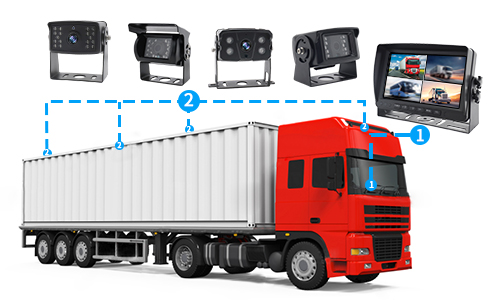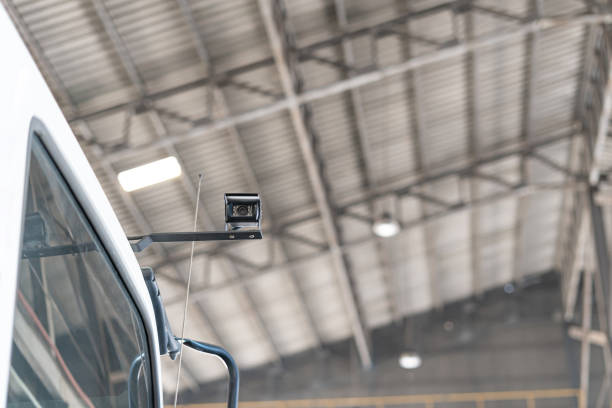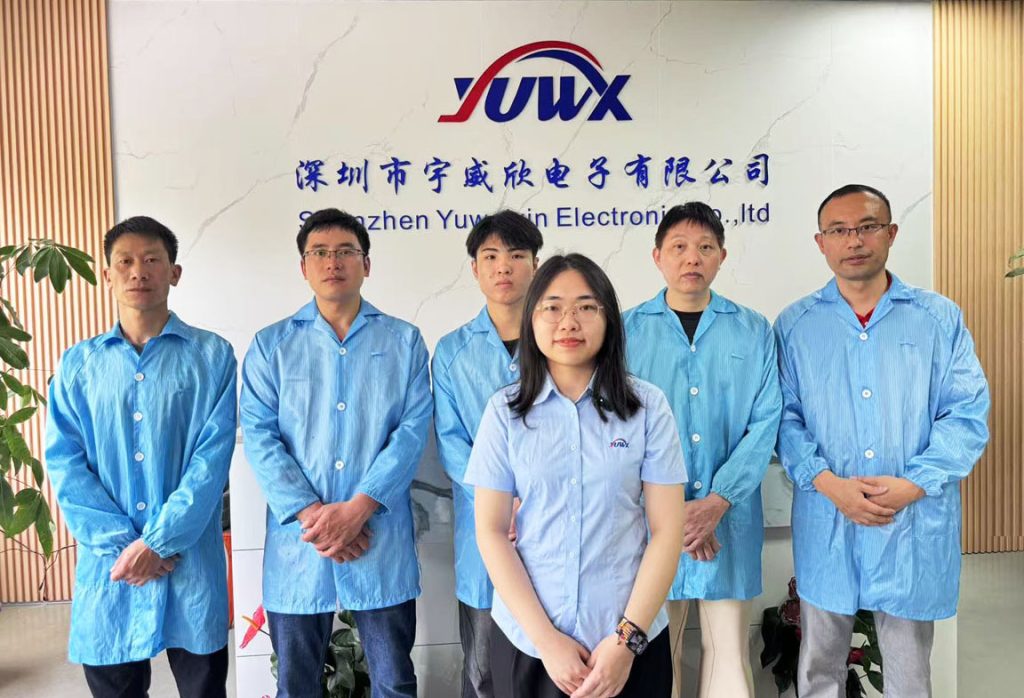Introduction: The Need for Enhanced Safety in Heavy Truck Reversing
In the world of heavy trucking, safety is paramount. Every day, truck drivers maneuver large vehicles in tight spaces, often relying on their own skill and intuition. While advanced safety features such as proximity sensors and backup alarms have become standard, there is a growing recognition that a more comprehensive visual aid system can significantly improve reversing and parking safety. For heavy truck drivers, widescreen car monitors equipped with intelligent reversing monitoring systems offer a solution that enhances visibility and reduces risk.
The challenges of reversing large trucks in confined spaces—such as loading docks, narrow roads, and crowded parking lots—demand the utmost attention to every detail of the surrounding environment. Traditional mirrors and small rearview cameras may not provide enough coverage to ensure safe and accurate maneuvering. This is where widescreen car monitors become invaluable. With their wide-angle views and real-time data integration, these monitors offer clearer, more comprehensive visual feedback, allowing drivers to safely navigate even the most challenging situations.
In this article, we will explore why widescreen car monitors are a crucial addition to heavy trucks, particularly for intelligent reversing monitoring. We will look into how these systems work, the advantages they bring to truck drivers, and the reasons why their installation is becoming an industry standard.
The Unique Challenges of Reversing Heavy Trucks
Reversing a large truck is an inherently complex task. Due to the truck’s size, a driver cannot easily see the full surroundings from the cab. Conventional mirrors often fail to offer sufficient visibility, especially in tight spaces or when large obstructions block the view. The blind spots around the rear of the truck can be extensive, and relying solely on mirrors can lead to accidents or collisions.
The rear of a heavy truck often extends significantly beyond the driver’s line of sight, making it difficult to assess the distance between the truck and obstacles. Reversing sensors may provide distance alerts, but they cannot give a full visual representation of the environment. Widescreen car monitors equipped with high-definition cameras offer a more reliable solution. They allow drivers to view a wider area behind the truck in real-time, reducing the risk of collisions and improving maneuvering accuracy.
Additionally, large vehicles frequently need to reverse into areas with limited space, such as tight loading docks, narrow roads, or parking spaces. Widescreen monitors give drivers a complete view of their surroundings, allowing them to make the necessary adjustments with confidence and precision.
How Widescreen Car Monitors Improve Visibility and Safety
Widescreen car monitors for heavy trucks are equipped with high-definition cameras that capture detailed, real-time footage of the environment behind the vehicle. These monitors provide a wider field of view than traditional mirrors or smaller cameras, eliminating blind spots and enabling drivers to see more of the area surrounding the vehicle.
One of the most significant advantages of widescreen monitors is their ability to display multiple camera feeds simultaneously. Drivers can view footage from cameras mounted at various points around the truck, including the rear, sides, and even the front. This creates a comprehensive image of the truck’s surroundings, improving spatial awareness and reducing the chances of collisions. For example, a widescreen monitor might show the area directly behind the truck, the rear sides, and the blind spots in the front corners, all on one screen. This visual integration is crucial for safe maneuvering in complex environments.
Furthermore, the high-definition capabilities of these monitors ensure that the footage is clear and sharp, even in low light or adverse weather conditions. Many monitors are equipped with night vision or infrared technology, enabling visibility in dark or poorly lit areas. This is particularly important for truck drivers who may need to park or reverse in low-light conditions, such as at night or in dimly lit warehouse yards.
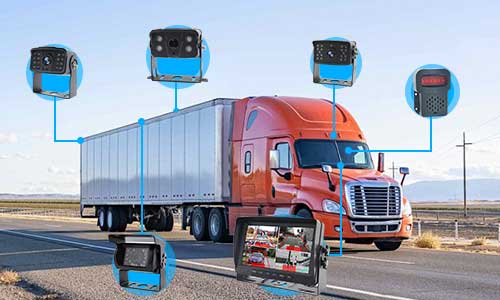
The Role of Intelligent Reversing Monitoring Systems
Intelligent reversing monitoring systems incorporate various technologies designed to enhance the reversing experience and ensure safety. These systems typically use a combination of sensors, cameras, and advanced software algorithms to provide real-time feedback and warnings to the driver.
For example, many systems offer object detection features that can identify potential obstacles in the vehicle’s path. When an obstacle is detected, the system can alert the driver with an on-screen visual cue or an audible warning. In some cases, the system may even provide dynamic guidelines on the monitor, indicating the safe path for reversing and helping the driver avoid collisions.
Another feature of intelligent reversing systems is the integration with GPS technology. Some systems track the truck’s location and offer recommendations for parking or reversing, optimizing the maneuvering process. This is particularly helpful for long-haul truck drivers who often navigate large facilities or complex parking structures.
By combining these features with a widescreen display, intelligent reversing monitoring systems enable drivers to not only see what’s behind them but also make informed decisions based on real-time data. This enhanced situational awareness is key to reducing accidents, improving efficiency, and protecting both the driver and the vehicle.
The Benefits of Widescreen Monitors for Truck Drivers
There are numerous advantages to installing widescreen car monitors with intelligent reversing systems in heavy trucks. Below are some of the most notable benefits:
1. Improved Maneuvering in Tight Spaces
For heavy trucks, the ability to navigate tight spaces safely is crucial. Widescreen car monitors provide drivers with a more comprehensive view of their surroundings, reducing the risk of accidents when parking or reversing. By offering a wider and clearer field of view, these monitors help drivers assess distances accurately and avoid obstacles.
2. Enhanced Safety
The main reason for installing widescreen monitors is safety. Trucking accidents, particularly those involving pedestrians, other vehicles, or property, often occur during reversing. The wider visibility offered by widescreen monitors helps eliminate blind spots and ensures that the driver has a full view of the area behind the vehicle.
3. Real-Time Data Integration
Widescreen monitors, when paired with intelligent systems, offer real-time integration of camera feeds, sensor data, and object detection. These features help drivers avoid potential hazards and make informed decisions in real time. The system’s ability to alert drivers to obstacles or changes in the environment adds a layer of safety.
4. Reduced Driver Fatigue
Maneuvering a heavy truck in challenging conditions can be stressful and tiring. Widescreen monitors reduce the mental strain of reversing by offering a clear, wide-angle view of the surroundings. This allows drivers to reverse with more confidence and less mental effort, reducing fatigue and improving overall driving performance.
5. Increased Operational Efficiency
By improving reversing accuracy and reducing the time it takes to park or maneuver, widescreen car monitors help truck drivers operate more efficiently. The ability to reverse safely and accurately reduces the time spent on tasks such as parking and unloading, contributing to better operational efficiency.
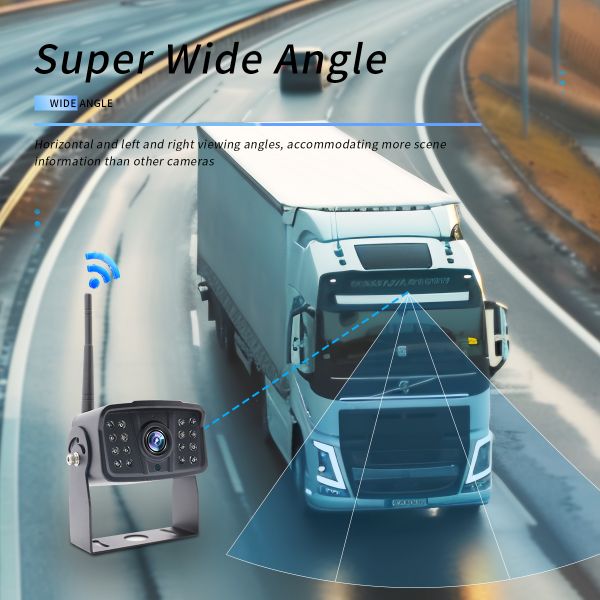
Practical Considerations for Installing Widescreen Monitors in Trucks
While the benefits of widescreen monitors are clear, there are several factors to consider when installing these systems in heavy trucks:
-
Installation Complexity: Installation of widescreen monitors requires proper calibration and positioning to ensure optimal visibility. This might require professional assistance to install the cameras and integrate the system with the vehicle’s existing electronics.
-
System Compatibility: It’s important to ensure that the chosen monitor is compatible with the truck’s existing safety features, such as proximity sensors and backup alarms.
-
Durability: Given the tough environments in which trucks operate, it is essential to choose a ruggedized monitor designed to withstand vibrations, temperature changes, and weather conditions.
-
Cost: While the benefits of widescreen monitors are undeniable, the initial cost of installation can be significant. However, the return on investment through enhanced safety and operational efficiency makes it a worthwhile investment in the long term.
Conclusion: Widescreen Monitors as a Game-Changer for Heavy Truck Reversing
In conclusion, the installation of widescreen car monitors equipped with intelligent reversing monitoring systems is highly recommended for heavy truck drivers. These systems offer a level of safety, visibility, and efficiency that traditional mirrors and small backup cameras cannot match. By providing a wider, clearer view of the truck’s surroundings, widescreen car monitors help drivers navigate tight spaces, avoid obstacles, and enhance overall driving performance.
With the integration of advanced sensor systems and real-time feedback, these monitors are becoming an essential tool for modern truck drivers. As the technology continues to evolve, the benefits of widescreen monitors will only increase, making them a valuable investment for safety-conscious fleet operators and independent truck drivers alike.
In the future, we can expect widescreen car monitors to become a standard feature in all heavy trucks, further improving safety standards and operational efficiency across the industry.



